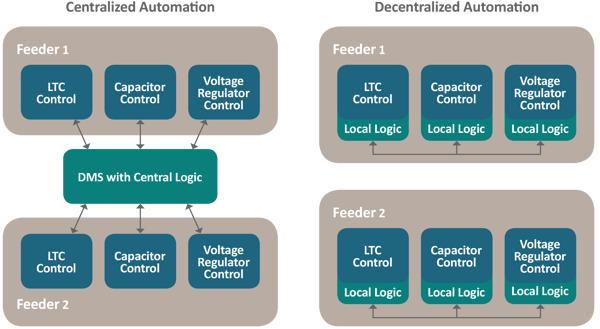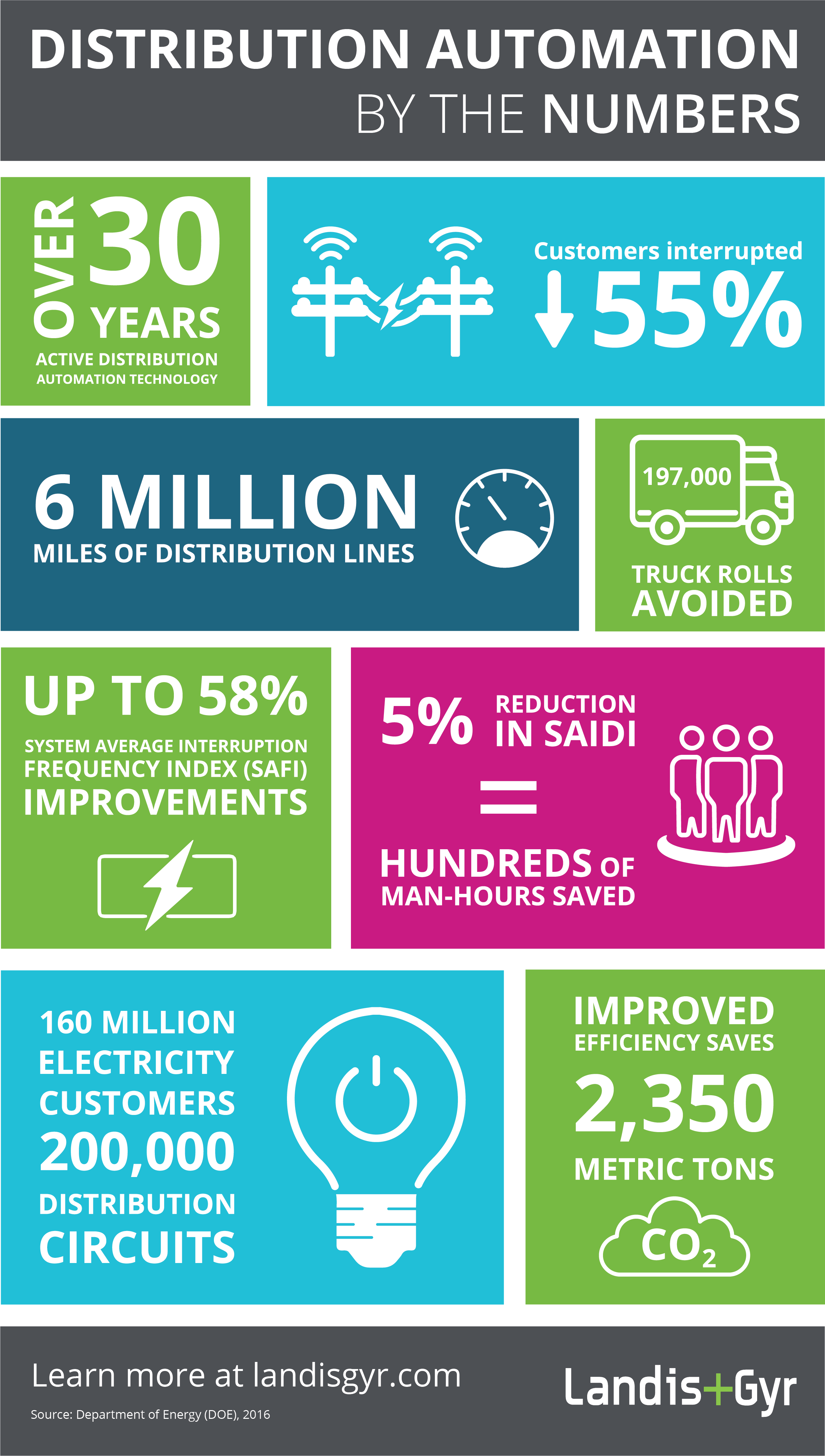As distribution grids continue to evolve, new equipment going into the field is either “smart” off the shelf or able to be fitted with intelligent devices. So the discussion occurring now concerns how best to control distribution automation devices and sensors. There are two primary options: automation that is managed centrally with a distribution management system (DMS) or automation that is manage locally with local control packages. This is illustrated in the figure below.

With a centralized approach, a DMS is able to leverage information from many sensors to create an execution strategy. This is an effective approach, but it can take longer for the system to execute. This delay can have significant impacts on measured reliability performance. While decentralized systems improve response time, the ability to leverage system-level information is lost.
New technologies for connecting devices allow for the best of both worlds. Enhanced computing capabilities can be placed at the edge of grid to intelligently manage a number of devices locally. At the same time there can be connectivity up through the community and the system levels, preventing the need to trade one for the other. Better yet, this type of technology can be flexible enough to allow the intelligence to shift between all three levels with virtually no hardware changes in the field.
This view is what we call layered intelligence, and it ensures a utility can effectively run both centralized and remote decision making where and when it best fits the management plan.








-001.jpg)
.jpg)




Leave a comment